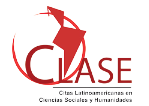Estudiantes en ciencias
la producción científica de las mujeres graduadas en la UFAM
DOI:
https://doi.org/10.5433/1981-8920.2022v27n3p158Palabras clave:
Mujeres en la ciencia, Estudios métricos, Estudiantes, Producción científicaResumen
Introducción: A pesar de los avances recientes en relación a la presencia femenina en la ciencia, existe una disparidad entre géneros en relación con la producción científica y las carreras en el área, lo que suscita una reflexión sobre la demanda de estímulos e incentivos dirigidos a mujeres y niñas que aspiran a convertirse en investigadoras.
Objetivo: Identificar la producción científica de los estudiantes de posgrado de la UFAM, caracterizando la importancia y el papel de la mujer en la ciencia, así como mapear la producción científica y presentar un panorama del período de 2018 a 2020.
Metodología: Establece el abordaje como método cuantitativo que tiene como objetivo medir la producción científica de las mujeres y como procedimiento técnico la investigación bibliográfica, además del uso de estudios métricos de la información a través del análisis bibliométrico para analizar el trabajo de las estudiantes.
Resultados: Durante la pandemia, es posible observar que hay una fuerte caída en la producción de estos estudiantes, así como una gran cantidad de producciones científicas con los temas de salud y educación.
Conclusiones: Es necesario que la sociedad adopte nuevas estrategias para lograr este empoderamiento femenino e incentivar a las estudiantes a realizar producción científica, que es solo el primer paso para lograr la igualdad y buscar soluciones para transformar la comunidad científica.
Descargas
Citas
CHASSOT, Attico. A ciência é masculina? É, sim senhora! Revista Contexto & Educação, Ijuí, v. 19, n. 71-72, p. 9-28, 2004. Disponível em: https://doi.org/10.21527/2179-1309.2004.71-72.9-28. Acesso em: 12 nov. 2021.
DROESCHER, Fernanda Dias; SILVA, Edna Lucia da. O pesquisador e a produção científica. Perspectivas em Ciência da Informação, Belo Horizonte, v. 19, n. 1, p. 170-189, mar. 2014. Disponível em: http://www.scielo.br/scielo.php?script=sci_arttext&pid=S1413-99362014000100011&lng=pt&nrm=iso. Acesso em: 27 jun. 2020. DOI: https://doi.org/10.1590/S1413-99362014000100011
ELSEVIER. Gender in the global research landscape report. Amsterdã: Elsevier B. V., 2017. 96 p. Disponível em: https://www.elsevier.com/__data/assets/pdf_file/0008/265661/ElsevierGenderReport_final_fo r-web.pdf. Acesso em: 25 jun. 2020.
INSTITUTO LEGADO DE EMPREENDEDORISMO SOCIAL. 11 de fevereiro: o Dia Internacional das Mulheres e das Meninas na Ciência. Curitiba: [s.n.], 2000. Disponível em: https://institutolegado.org/blog/11-de-fevereiro-o-dia-internacional-das-mulheres-e-das- meninas-na- ciencia/?gclid=CjwKCAiA0KmPBhBqEiwAJqKK4362gx8sW9aCf7N_GAFdAEkkSCqKZN Gd7qdmHVRIrqflEbLH2UuychoCogsQAvD_BwE. Acesso em: 18 jan. 2022
LETA, Jacqueline. As mulheres na ciência brasileira: crescimento, contrastes e um perfil de sucesso. Estudos Avançados, São Paulo, v. 17, n. 49, p. 271-284, dez. 2003. Disponível em: http://www.scielo.br/scielo.php?script=sci_arttext&pid=S0103-40142003000300016&lng=en&nrm=iso. Acesso em: 28 jun. 2020. DOI: https://doi.org/10.1590/S0103-40142003000300016
MATTHEWS, David. Pandemic lockdown holding back female academics: data show. 2020. Disponível em: https://www.timeshighereducation.com/news/pandemic-lockdown-holding-back-female-academics-data-show. Acesso em: 29 ago. 2022
NEGRI, Fernanda de. Women in science: still invisible? In: PRUSA, Anna; PICANÇO, Lara. A snapshot of the status of women in Brazil: 2019. Washington, Dc: Wilson Center, 2019. Cap. 6. p. 20-24. Disponível em: https://www.wilsoncenter.org/sites/default/files/media/documents/publication/status_of_wom en_in_brazil_2019_final.pdf. Acesso em: 25 jun. 2020.
PARENT IN SCIENCE. Universidade Federal do Rio Grande do Sul. Produtividade acadêmica durante a pandemia: efeitos de gênero, raça e parentalidade. Porto Alegre: Parent In Science, 2020. 13 slides, color. Disponível em: https://www.ufrgs.br/ciencia/wp-content/uploads/2020/07/LevantamentoParentinSciencePandemia.pdf. Acesso em: 21 jan. 2022.
RIGOLIN, Camila Carneiro Dias; HAYASHI, Carlos Roberto Massao; HAYASHI, Maria Cristina PiumbatoInnocentini. Métricas da participação feminina na ciência e tecnologia no contexto dos Incts: primeiras aproximações. Liinc em Revista, Rio de Janeiro, v. 9, n. 1, p. 143-170, 2013. Disponível em: http://revista.ibict.br/liinc/article/view/3400. Acesso em 27 jun. 2020. DOI: https://doi.org/10.18617/liinc.v9i1.524
SCHIEBINGER, Londa. Mais mulheres na ciência: questões de conhecimento. História, Ciências, Saúde-Manguinhos, Rio de Janeiro, v. 15, supl. p. 269-281, 2008. Disponível em: https://www.scielo.br/j/hcsm/a/LZcRqYbsQR4cxYkgfCGyjyr/?lang=pt. Acesso em 13 jan. 2020. DOI: https://doi.org/10.1590/S0104-59702008000500015
SCHIEBINGER, Londa. O feminismo mudou a ciência? Bauru: EDUSC, 2001. 384 p. Disponível em: https://bibliotecaonlinedahisfj.wordpress.com/2015/03/04/o-feminismo-mudou-a-ciencia- londa-schienbinger/. Acesso em: 17 mar. 2021.
UNESCO. Decifrar o código: a educação de meninas e mulheres em ciências, tecnologia e matemática (STEM). Brasília: Unesco, 2018. Disponível em: https://unesdoc.unesco.org/ark:/48223/pf0000264691. Acesso em: 18 ago. 2021.
Descargas
Publicado
Cómo citar
Número
Sección
Licencia
Derechos de autor 2023 Celia Regina Simonetti Barbalho, Yasmin Martins Gomes

Esta obra está bajo una licencia internacional Creative Commons Atribución 4.0.
A revista se reserva o direito de efetuar, nos originais, alterações de ordem normativa, ortográfica e gramatical, com vistas a manter o padrão culto da língua e a credibilidade do veículo. Respeitará, no entanto, o estilo de escrever dos autores. Alterações, correções ou sugestões de ordem conceitual serão encaminhadas aos autores, quando necessário.
O conteúdo dos textos e a citação e uso de imagens submetidas são de inteira responsabilidade dos autores.
Em todas as citações posteriores, deverá ser consignada a fonte original de publicação, no caso a Informação & Informação.











